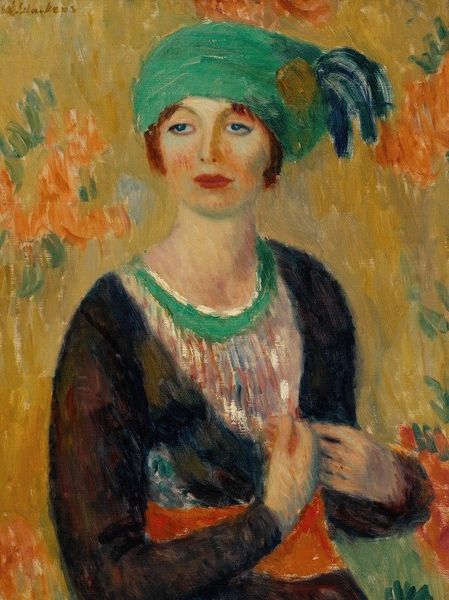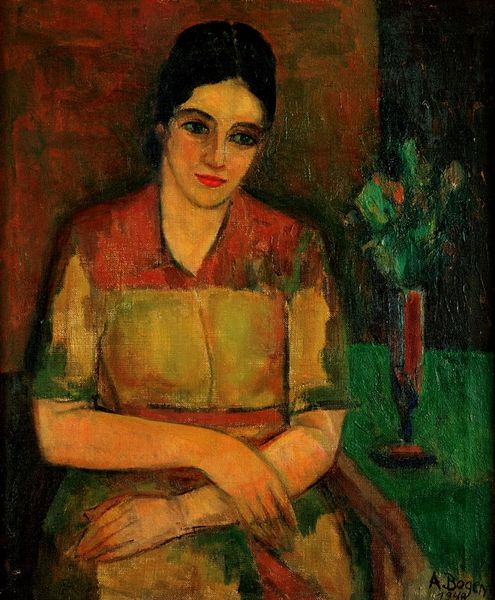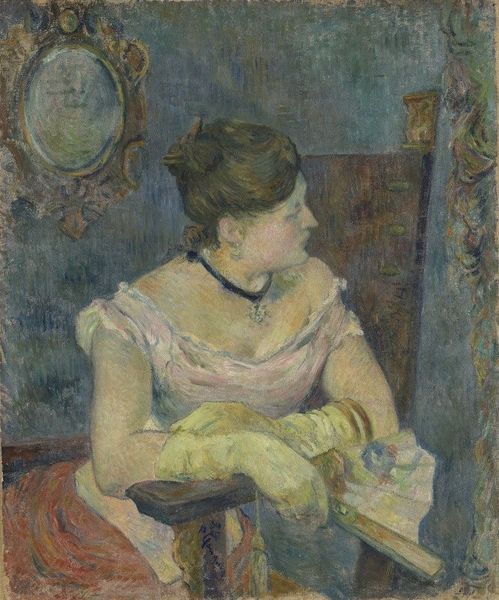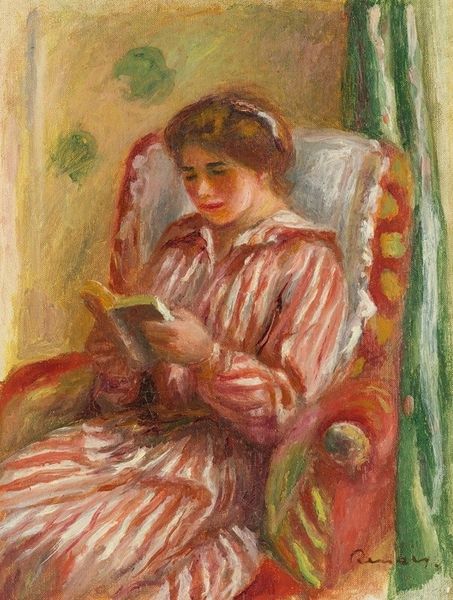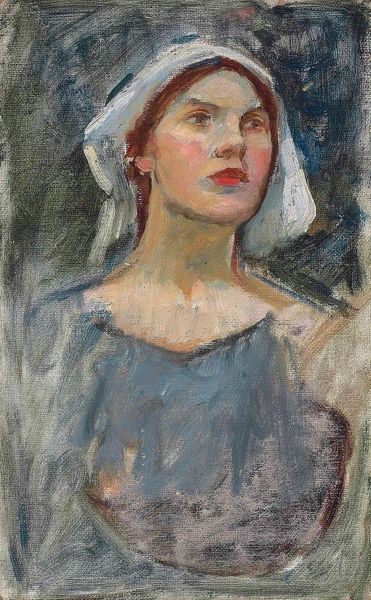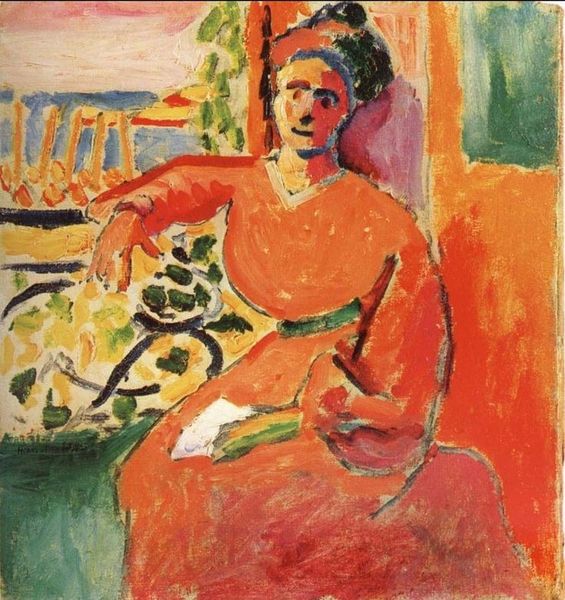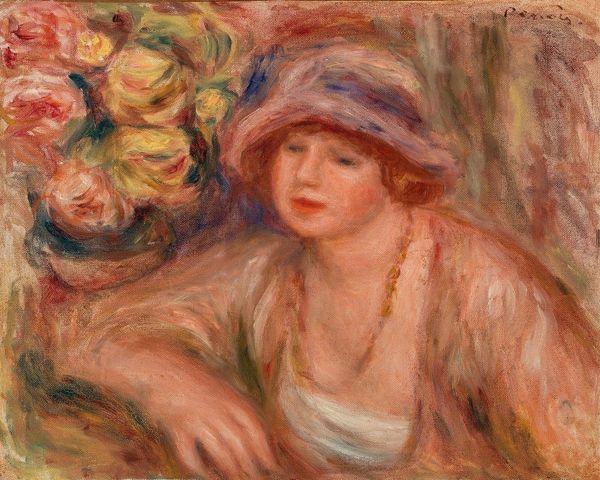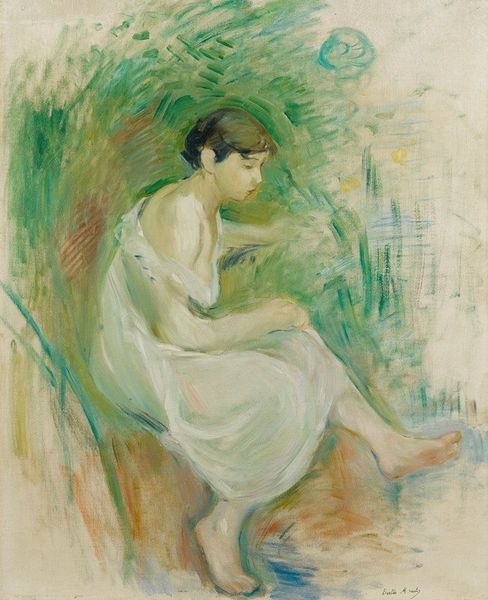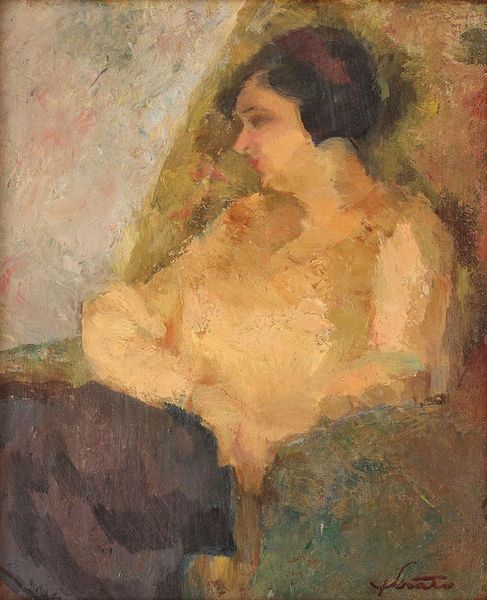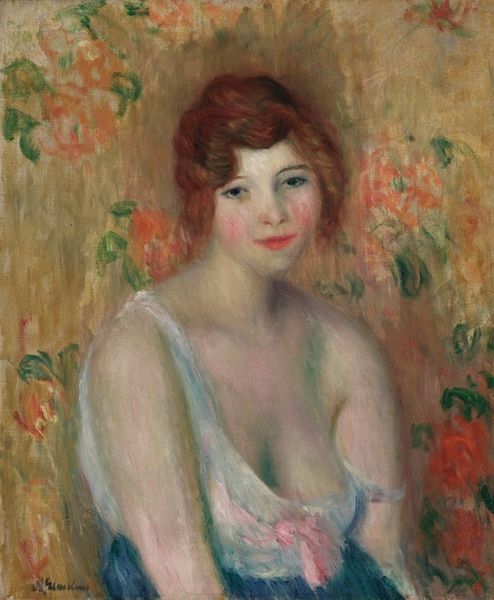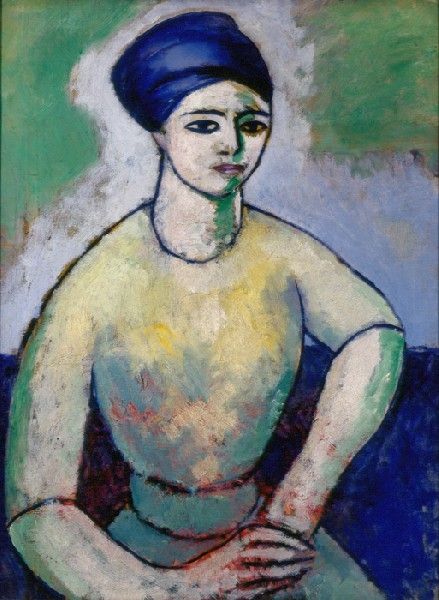
Copyright: Public Domain: Artvee
Curator: Magnus Enckell's "Woman in her Petticoat," created in 1912 using oil paint, immediately evokes a sense of quiet contemplation. Editor: It does. The colors, particularly that burnt orange backdrop, lend an almost melancholic feel, wouldn't you agree? It reminds me of Edwardian sensibilities regarding dress and domesticity. The gold necklace draws your eye right away. Curator: Precisely. Enckell's brushstrokes are quite loose, aren't they? It gives the entire work an unfinished quality, blurring the line between sketch and finalized painting, highlighting the process and choices made in representing her figure and garb. Editor: It's more than just process, though. A "petticoat" suggests intimacy, a private moment. She's reading a letter. Letters as objects—containers of emotion and bearers of news—are a recurrent motif in art, think of Dutch Golden Age paintings, with women reading letters that change their lives! What meaning might the text she holds carry? Curator: I see your point, but I'm also fascinated by how Enckell creates texture through layering of paint. You see the green subtly outlining the woman. The seemingly casual strokes actually contribute to the sitter's solid presence. One also has to account for art nouveau trends, how patterns were influencing artist practices from painting to applied arts. Editor: Perhaps. Yet those colors—the orange, the touches of green in her skin tones, even the crimson headband—feel deeply symbolic, lending themselves to myriad interpretations of youth, sadness, and the burdens of tradition or lost loves. Curator: Ultimately, "Woman in her Petticoat" stands as a reminder of the power of oil paint to both reveal and conceal. Editor: And it continues to spark stories around such symbolic readings, a visual echo chamber for emotions long past.
Comments
No comments
Be the first to comment and join the conversation on the ultimate creative platform.
